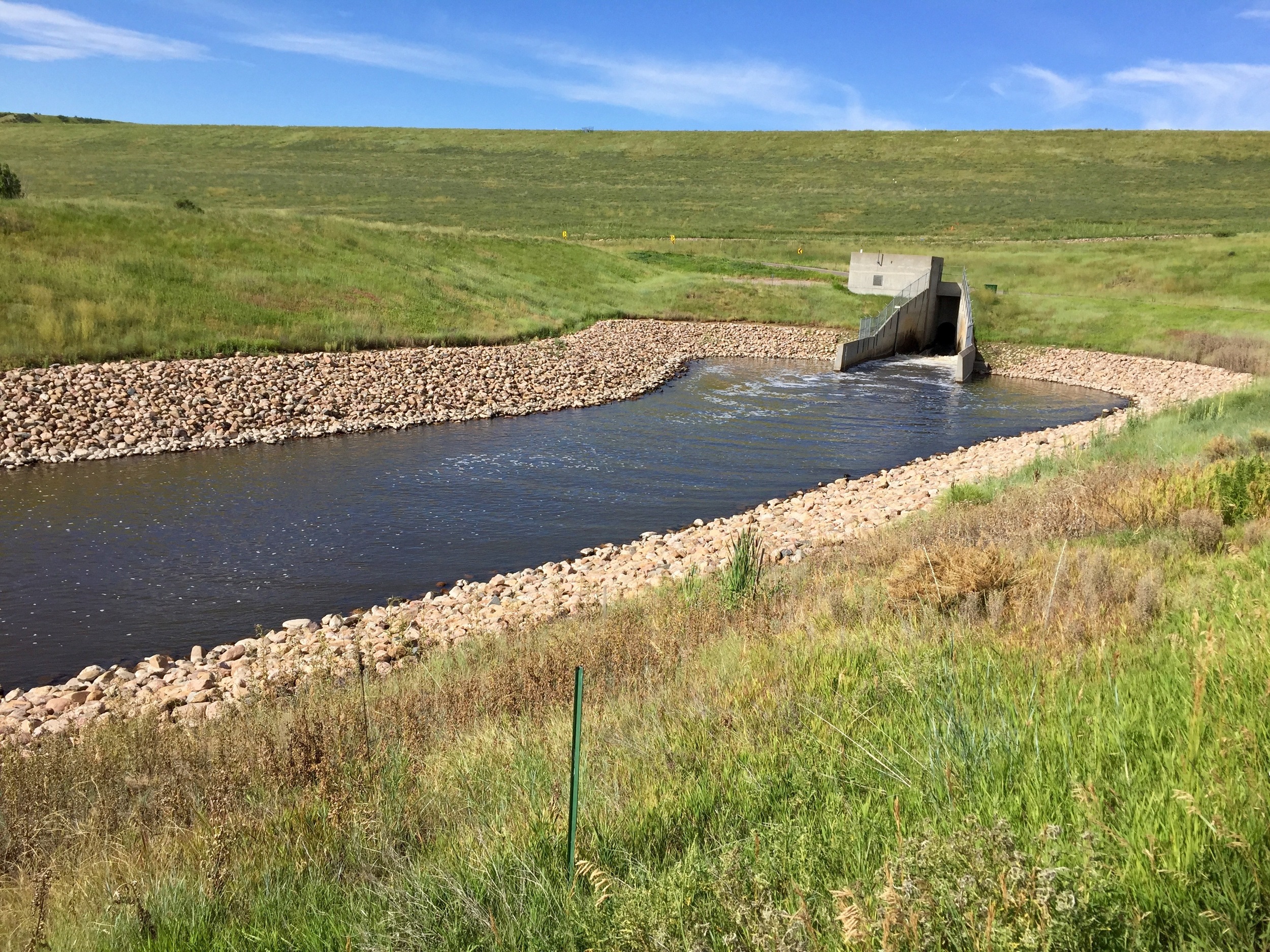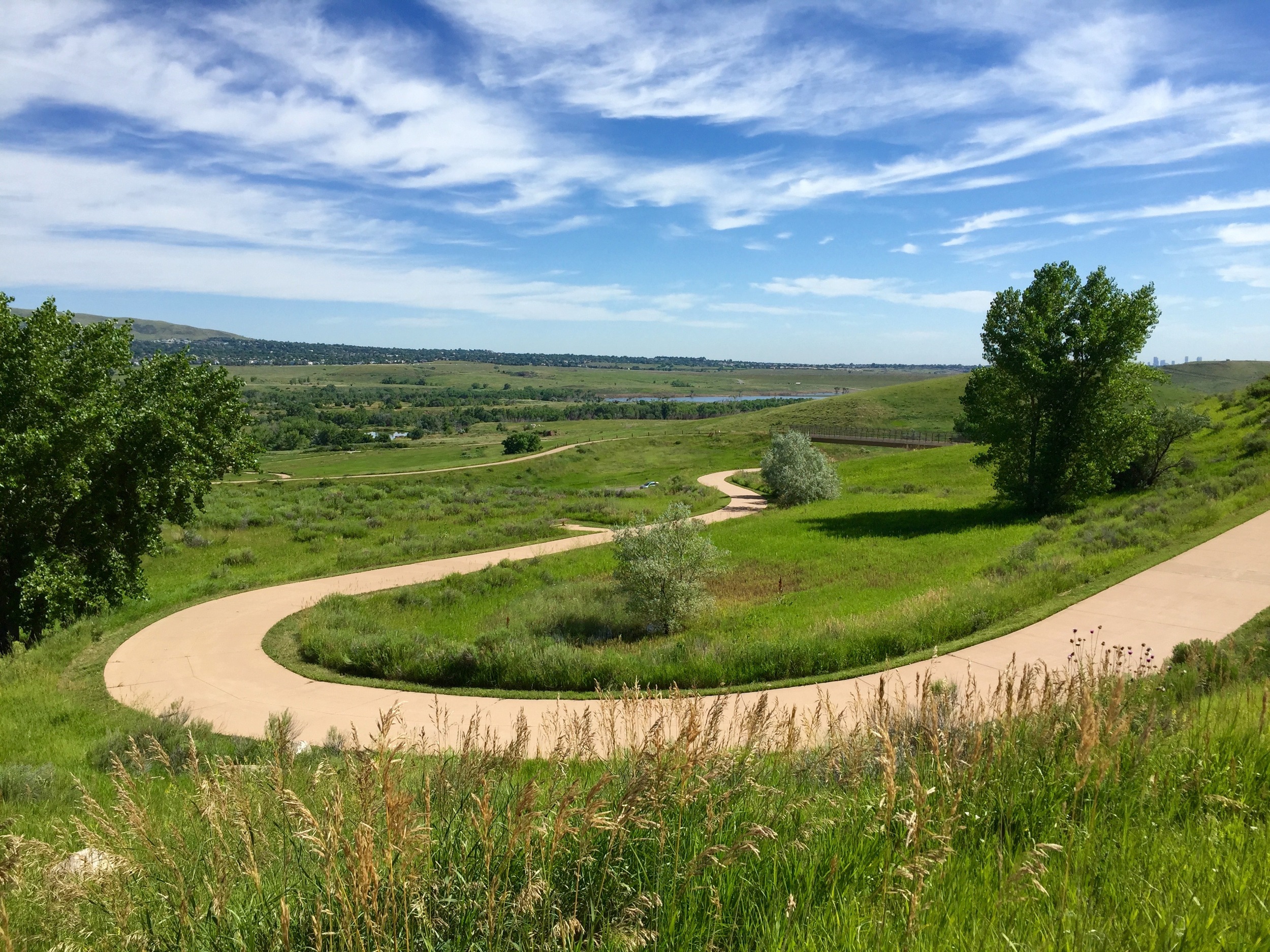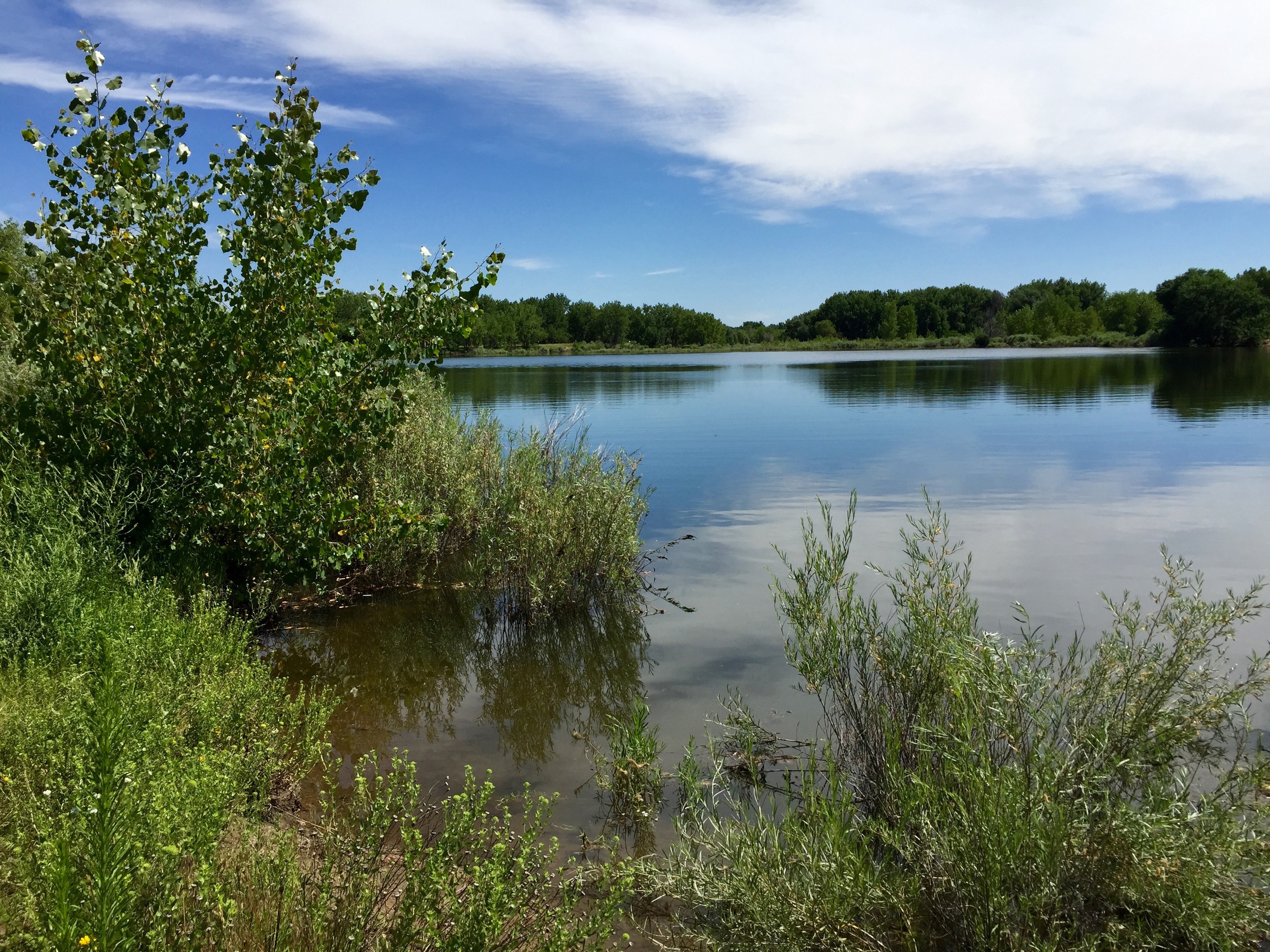Southern Spin
/South Denver Bike Loop
I recently gave the running legs a break with a road bike ride through southwest Denver linking together several bike trails for a diverse 30-mile loop. Across the street from the Regal Cinema at River Point I turned right onto the Bear Creek Trail (BCT) and set off along the narrow twisting concrete towards the western foothills. Before making the right turn I noticed ahead the bridge that I'd come back across to finish the ride. Rusted barbed wire and and industrial metal fencing along the trail contrasted with the grasses and overhanging trees along Bear Creek's gently flowing waters. Several clatter-board bridges span the creek in this early section with relatively tight turns. Broken Tee Golf Course's rolling fairways lined the left side of the trail. The first tricky route finding happened at about 1.5 miles where the route intersects South Lowell Blvd. Pausing to look for oncoming traffic I turned left (south) onto Lowell to pass over a bridge with an immediate right after this bridge to continue on the BCT. To the left I passed the well-kept athletic fields outside Mullen High School and entered into Bear Creek Park over another bridge. The route ducked under US Hwy 285, then Sheridan Blvd, and passed into the Bear Creek Greenbelt under another overpass at Wadsworth Blvd where the prairie dogs living trailside greeted me upon my arrival. On the far side of the Greenbelt (5.3 miles) I stopped at the Stone House in Lakewood Park, a uniquely constructed 19th-century home listed on the National Register of Historic Places. I followed a metal-blue dragonfly back to the trail where it resumed its westward direction by passing under Estes Street. Knowing about another tricky bit of route finding on the approach to Kipling Street I was sure to stay left at the junction, crossing over a creek bridge and then taking a right at the next junction to pass under the road grade elevated above. Not long after a right at a T-junction followed by a left to continue heading west got me around Kipling Parkway. Winding on behind condos and then curving right along the edge of the Fox Hollow Golf course, the most challenging route finding was done.












At the crossing of Fox Hollow Lane (7.3 miles) the path continued to the left paralleling the two-lane road to the Fox Hollow Golf Course. I slowed near the clubhouse of this public golf course to avoid any collisions with golf carts heading from to the tees. Here the trail picked up a wide road shoulder and began a gradual climb up towards the Mount Carbon Dam. Small, energetic birds flitted in and out of the sheltered area around the dam's outflow and the broad treeless earthen mass of the dam created a surreal landscape along this section of the ride. The biggest, steepest climb of the route proceeded by winding between the fairways and greens of the Homestead Golf Course to the top of the 250 foot climb. After huffing and puffing to the top I was rewarded with long views out to the foothills, back to the skyscrapers of downtown Denver, and upon Bear Creek Reservoir below. There are restrooms here as well as complimentary water. Back to the trail junction at mile 9.8 I held on for a windy and speedy serpentine descent into the open prairie of Bear Creek Lake Park. An unmarked junction at 11.3 miles signals a left turn that had me climbing again to cross over route 285 and out of the park to the C-470 Trail. The sidewalk alongside Home Depot on Eldridge Street led across Quincy Avenue and past power lines and prairie dogs.
Now on the C-470 bikeway I was sandwiched between Eldridge Street and the busy Hwy C-470 climbing steadily to Tipsy's, a Walmart-sized liquor outlet and a road crossing at Bowles Ave. The trail here begins descending and zooming along like the traffic on adjacent C-470. I searched for hawks above the hogbacks on the other side of the freeway here, but hardly had time to look up as I whizzed along on the smooth concrete. I was fortunate to catch the light at Kipling Avenue where the rest of the route continued as uninterrupted bike path all the way to the finish. Cresting a hill, the summer heat tempted me to stop for a refreshing break at Deer Creek Pool, a public facility of the City of Littleton with direct access from the trail. Big views across Chatfield Lake, filled with boaters on the day I passed by, offered more temptation to pedal a few extra miles for a visit to the swim beach. Instead, I soldiered on with my sub 2-hour goal in mind. The trail ducked away from C-470 to pass through the tunnel below Wadsworth Blvd. Another short climb and a descent to a left-turning pigtail kept me on track for the tunnel under C-470 (if you hit asphalt instead of concrete you've overshot this turn). that brought me into Chatfield State Park. Staying left, the trail passed heavy concrete flood control structures engineered to prevent South Platte River flooding and I enjoyed the straight away descent beside the river to a Y-junction shaded by cottonwood trees. Again staying left onto the Mary Carter Greenway I pedaled under a bridge and scooted a round-about entering the busiest segment of this road ride.
Threading between Eaglewatch and Redtail Lake, the trail became very scenic for the next couple of miles passing through South Platte Park and by the Carson Nature Center. The lakes offer opportunities to birdwatch, fish and relax not far from the bustle of downtown Denver. I was especially cautious and mindful in this area considering all the other trail users including joggers, runners, many cyclists, and even families with baby strollers. There is a 15mph speed limit on the trail and roundabouts to slow competitive riders. There has been at least one fatal accident between two cyclists on this section of trail so be careful when in this area. A couple miles up the trail I saw the large barn at the Hudson Gardens and Event Center. I highly recommend stopping off at the trailside Nixon's Coffe House here for a pit stop. Fresh smoothies or a light lunch make a great compliment to this day touring the outskirts of Denver. Hudson Gardens is free to visit and features beekeeping, herb gardens, rose gardens, Victoria Water lillies, vegetable gardens, aquatic plants, a water garden, and my favorite garden: the conifer grove. But the best part of the place, not far at all from the bikeway is the Garden Railroad, an outdoor model train set running through a landscaped slope of tunnels, landforms, and native plants. From Hudson Gardens I crossed over to the west side of the river as soon as I could find a bridge and spun out a few more quick miles back to the starting point enjoying the downhill grade and keeping an eye out for paddlers and stand-up-paddle borders at the Union Chutes and another eye out for errant golf balls as I passed back through the Broken Tee Golf course in the final mile of the ride and over one last bridge back to the movie theatre. This ride really is an outstanding tour on a summer day with plenty of unique options to enrich the experience along the way.
Your Turn
The South Denver Bike Loop is challenging based only on its distance which can be broken up by many diversions along the way to permit rest and leisure. Plan at least a half-day if you want to stop at the Stone House, Deer Creek Pool, and Hudson Gardens. Check the websites for hours of operation. The trip over to the Chatfield Swim Beach would be an extra 3 to 4 miles there-and-back. If riding this route with no side trips or stops expect to take between two to three hours on a road bike. Bear Creek Lake Park also has wildlife, trails, and a swim beach to explore on this loop. Of course, you can finish your ride recovery with a visit to the cinema at which the ride begins and ends. It has air-conditioning after all.
P&P Extra
Replenish your carbohydrates with breakfast at Lucille's Creole Cafe. The Eggs Sardou (creamed spinach, gulf shrimp, and hollandaise) will instantly transport you to the French Quarter and the buttermilk biscuits with house-made jam will fill you up for the rest of the day. Eat it guilt-free after pedaling about 28 miles to get there! If you want to include this on your loop, stay on the bike path that keeps to the east side of the South Platte River after leaving Hudson Gardens until you reach the restaurant at Bowles Ave. You can still cross back over to the west side after leaving Lucile's. It is located at 2852 West Bowles Ave, Littleton, CO 80120. 303-797-1190






